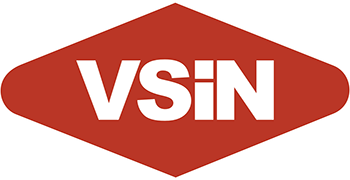Yankees vs. Blue Jays
Teams that won Game 1 were a perfect 12-0 in the Wild Card Round, but the Yankees put an end to that historical note, as those teams are now 15-1. The Red Sox won Game 1 behind a masterful performance from Garrett Crochet, but New York stormed back to win the last two games of the series and set up a date with the Blue Jays. Like the Tigers vs. Guardians series, now the top two division finishers go head-to-head when it matters more. And Yankees vs. Blue Jays is sure to be a banger of a series.
Unlike the top two AL Central finishers, who were separated by one game, the Blue Jays and Yankees had identical regular season records, but Toronto won the season series and got the bye while New York had to beat Boston to advance.
The Blue Jays emerged victorious in eight of the 13 head-to-head meetings, outscoring the Yankees 70-59. It was a 6-1 showing at Rogers Centre that propelled Toronto to the tiebreaker, which is fitting because they were 54-27 at home with a +94 run differential. They actually had a losing record and a negative run differential on the road at 40-41 and -17, a number that was far worse before the Blue Jays scored 45 runs in three games at Coors Field to sweep Colorado in a series with a +39 run differential.
So, that’ll be a key factor here and home-field advantage is obviously important to Toronto here. The Yankees, who won the division by Pythagorean Win-Loss Record and BaseRuns Record, were also much better at home with a 50-31 record and a +85 run differential, but they were 44-37 with a +79 run diff.
Let’s break down the three main phases of the game – offense, pitching, defense – and see if there’s an edge to be had.
Yankees vs. Blue Jays ALDS Odds
New York Yankees -150 // Toronto Blue Jays +130
Over/Under 3.5 Games (-360/+270) // Over/Under 4.5 Games (+155/-190)
Odds as of 11 a.m. PT from DraftKings Sportsbook on Friday, October 3
Yankees vs. Blue Jays ALDS Preview
Offense
We might as well start with me sounding like a broken record. Power production is so important in the playoffs and no team hit for more power than the Yankees. They hit 274 home runs and led the league with a .338 wOBA. They were the best offense against both lefties and righties. The Blue Jays only hit 191 homers, but did have the third-best wOBA in the league at .330.
The Yankees stole 134 bases to Toronto’s 77 and also had a 10.2% BB% to Toronto’s 8.4%. The biggest difference between the two teams in Toronto’s favor was a much lower K% at 17.8% compared to New York’s 23.5%. In the 13 head-to-head meetings, Toronto’s pitchers had a 22.6% K% against the Yankees. Meanwhile, New York’s pitchers only had a 15.2% K% against Toronto’s hitters.
So, that’s the key to this series. Can the Blue Jays continue to put a lot of balls in play and create, and cash in on, enough run-scoring opportunities to offset the power difference between the teams? Toronto only hit 13 HR in the 13 games. The Yankees hit 18, but New York struck out 111 times compared to Toronto’s 76. That is an enormous difference when you think about how a strikeout means zero chance to drive in a run, advance a runner, get a hit, etc.
From a rolling 3-year Statcast Park Factor standpoint, Rogers Centre ranks 11th in HR Park Factor. Yankee Stadium ranks third. Toronto did hit 104 home runs at home and batted .271/.340/.448, while the Yankees batted .243/.328/.452 at home, so you can really see how well Toronto swung the sticks under the shadow of the CN Tower.
On the road, though, Toronto was sixth in wOBA at .320 with a .260/.327/.407 slash, while the Yankees actually hit better on the road than at home with a .257/.336/.458 slash. So, that’s a really interesting thing to keep in mind for this series.
The other thing to keep in mind is that Toronto will be running out a very right-handed-heavy pitching staff. All of their starters are righties and all four primary relievers are righties. They have some matchup lefties. New York had the fifth-highest K% against righties, but made up for it by being the only team to hit over 200 homers off of RHP. So the onus is on a Toronto pitching staff that had a 12.8% HR/FB% against, which ranked 24th, to keep the ball in the park.
I do greatly appreciate that Toronto puts a ton of balls in play. The pressure of run-scoring situations is absolutely magnified in the playoffs. But, I still have to give the Yankees the advantage here because of their better power production.
Advantage: Yankees
Pitching
Inherently, the Blue Jays should have a pitching advantage because the Yankees went through the three-game series against the Red Sox and had to use Max Fried, Carlos Rodon and Cam Schlittler. While the NL teams get Sunday off to separate the series, the AL teams don’t have that. So that means that the Yankees won’t have Carlos Rodon until Game 3 on Tuesday. With Max Fried in Game 2, the Blue Jays have a potential advantage in Game 1 facing a lesser arm.
But, as I will write in all of these Division Series previews, the teams with the byes are going to have their own hardships to contend with, as the extended layoffs mean that relievers, who are used to working multiple times a week, haven’t really pitched for a while. At least the division came down to the final day, so the Blue Jays had to keep starters on their regular turns, so it’s not bad for somebody like Kevin Gausman, who pitched on September 28, but it is bad for somebody like Shane Bieber, whose last appearance was September 26.
Staying sharp is hard. The Blue Jays, like the Mariners and others, played intrasquad games and had workouts to try and stay on task and on track, but that environment is not a real game. And the stress of the postseason is a very real thing, obviously.
Anyway, the Blue Jays were 19th in ERA at 4.19, 22nd in xERA at 4.32, and 22nd in FIP at 4.27. It is important to take these numbers with a whole shaker of salt, though, because teams really shorten the leash on their pitching staffs. For example, Bowden Francis had a 6.05 ERA over 64 innings. He’s not pitching in this series. Only the best relievers pitch in high-leverage spots. Only the best starters are used.
And the same is true for the Yankees, who were 14th in ERA at 3.91, fifth in xERA at 3.83, and 11th in FIP at 4.00. Aaron Boone shortens the list of pitchers he’s willing to use and so the best of the best that a team has to offer are out there.
New York pitchers had a higher BB%, but the teams had nearly identical K% marks. But, there is one very concerning thing for Toronto and it is that their pitching staff allowed the highest Barrel% in the league at 9.9%. Guys like Jeff Hoffman, Shane Bieber, Jose Berrios, and various other relievers contributed in this department, so that’s a potentially big deal against a lineup like the Yankees.
New York’s overall bullpen numbers are better, though both relief corps have some landmines back there around a bunch of high-level performers. I don’t think either bullpen has a significant advantage here. I don’t think either pitching staff has a big advantage here. Toronto can neutralize the biggest advantages for guys like Rodon and Schlittler in that they miss a lot of bats. The Blue Jays don’t swing and miss often. But, the high Barrel% for Toronto is worrisome enough that I think the Yankees still get the slight edge.
Advantage: Yankees slightly
Defense
This is an area where the Blue Jays have a decisive advantage. They finished the regular season +15 in Outs Above Average, while the Yankees were -6. It wasn’t necessarily an advantage that boosted Boston’s chances, but it could very well help Toronto. They have a big advantage in outfield defense and also have the better infield defense.
Not only that, but Alejandro Kirk was one of the best pitch framers in the league. Austin Wells was third per Statcast with +11 Catcher Framing Runs, but Kirk was second with +16. It is worth noting that Wells was not a good framer at the top of the zone, but was the best framer in the league on low pitches. Something to consider from a pregame or live betting standpoint depending on the home plate umpire.
Neither catcher excelled when it came to the running game, both ranking exactly average in Catcher’s CS Above Average per Statcast. Toronto only attempted eight steals in the regular season against New York and was 5-of-8. New York was 7-for-11. I doubt we see much running here.
Advantage: Blue Jays
Yankees vs. Blue Jays ALDS Prediction
I’ll preface this by saying that I do think that the Yankees win the series and move on. However, the value bet here is the Blue Jays at +130 and I will take them as a pre-series position. If they can leverage their Game 1 advantage and draw first blood, the favorite role flips. New York was very fortunate to get a terrific performance from Schlittler in Game 3 against Boston to preserve the bullpen a bit.
The Yankees’ power advantage is certainly a big deal, but the fact that Toronto can create chaos with a lot of balls in play is very intriguing to me, especially since the Yankees are not a great defensive team. Toronto can probably scrape by with enough power, but not striking out in high-leverage situations is super valuable as well.
If we get what I’m hoping for here and Toronto wins Game 1, I’ll decide if I want to play back on New York, much like I did at +170 in the Wild Card Round, as having Fried, Rodon, and Schlittler does swing the balance of power back a little bit.
Pick: Blue Jays +130
Other Division Series Previews: Cubs vs. Brewers | Dodgers vs. Phillies | Tigers vs. Mariners






